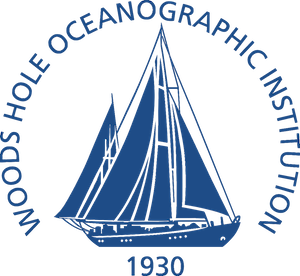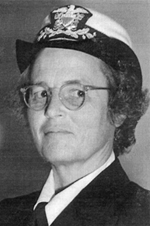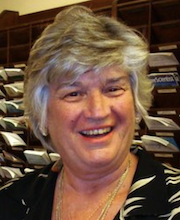
The Woods Hole Oceanographic Institution is a private, nonprofit research and higher education facility dedicated to the study of marine science and engineering.

The Marine Biological Laboratory (MBL) is an international center for research and education in biological and environmental science. Founded in Woods Hole, Massachusetts, in 1888, the MBL is a private, nonprofit institution that was independent for most of its history, but became officially affiliated with the University of Chicago on July 1, 2013. It also collaborates with numerous other institutions.

Teuthology is the study of cephalopods. Cephalopods are members of the class Cephalopoda in the Phylum Mollusca. Some common examples of cephalopods are octopus, squid, and cuttlefish. Teuthology is a large area of study that covers cephalopod life cycles, reproduction, evolution, anatomy and taxonomy.

Warder Clyde Allee was an American ecologist. He is recognized to be one of the great pioneers of American ecology. As an accomplished zoologist and ecologist, Allee was best known and recognized for his research on social behavior, aggregations and distributions of animals in aquatic as well as terrestrial environments. Allee attended Earlham College and upon his graduation in 1908, pursued advanced studies at the University of Chicago where he received his PhD and graduated summa cum laude in 1912. Allee's most significant research occurred during his time at the University of Chicago and at the Marine Biological Laboratory at Woods Hole in Massachusetts. His research findings led to many publications, with the most notable being Principles of Animal Ecology and Animal Aggregations. Allee was married to author Marjorie Hill Allee and remained active in the field of biology until his death in 1955 at the age of 69.

Mary Sears was a Commander in the United States Naval Reserve and an oceanographer at the Woods Hole Oceanographic Institution (WHOI).
The American Journal of Physics is a monthly, peer-reviewed scientific journal published by the American Association of Physics Teachers and the American Institute of Physics. The editor-in-chief is Beth Parks of Colgate University.

Cornelia Maria Clapp was an American educator and zoologist, specializing in marine biology. She earned the first Ph.D. in biology awarded to a woman in the United States from Syracuse University in 1889, and she would earn a second doctoral degree from the University of Chicago in 1896. Clapp was the first female researcher employed at the Marine Biological Laboratory, as well as its first female trustee. She was rated one of the top 150 zoologists in the United States in 1903, and her name was starred in the first five editions of American Men of Science.
Hopkins Marine Station is the marine laboratory of Stanford University. It is located ninety miles south of the university's main campus, in Pacific Grove, California on the Monterey Peninsula, adjacent to the Monterey Bay Aquarium. It is home to ten research laboratories and a fluctuating population of graduate and undergraduate students. It has also been used for archaeological exploration, including of the Chinese-American fishing village that existed on the site before burning down in 1906.

Roger Arliner Young was an American scientist of zoology, biology, and marine biology. She was the first African American woman to receive a doctorate degree in zoology.

Grover Cleveland Stephens, Jr., was an American marine biologist and comparative physiologist at the University of Minnesota and the University of California, Irvine.

Mary Dora Rogick was an American zoologist. In 1935 she joined the College of New Rochelle in New York, where she spent her career as a professor and researcher. She was a specialist in the taxonomy and ecology of bryozoa, a phylum of aquatic invertebrate animals.
Cindy Lee Van Dover is the Harvey Smith Professor of Biological Oceanography and chair of the Division of Marine Science and Conservation at Duke University. She is also the director of the Duke University Marine Laboratory. Her primary area of research is oceanography, but she also studies biodiversity, biogeochemistry, conservation biology, ecology, and marine science.
Ethel (Nicholson) Browne Harvey was an American embryologist, known for her critical findings about cell division, using the embryology of sea urchins, and for early work studying embryonic cell cleavage.
William R. Jeffery is an American professor of evolutionary developmental biology whose studies focus on the evolution of development, especially blind cavefish and tunicates. He is a fellow of the American Association for the Advancement of Science and the Linnean Society of London.

Barbara E. Ehrlich is Professor of Pharmacology and of Cellular and Molecular Physiology at Yale University working on the biophysics of membrane ion channels. Recent research investigates the function of polycystin-2, the inositol trisphosphate receptor, and the ryanodine receptor.

Catherine Norton was an American librarian. She was the first Director of Information Systems at the Marine Biological Laboratory (MBL).
Alice Alldredge is an American oceanographer and marine biologist who studies marine snow, carbon cycling, microbes and plankton in the ecology of the ocean. She has conducted research in the open sea, at her laboratory at the University of California, Santa Barbara as well as in collaboration with the Long Term Ecological Research Network (LTER) at the Mo'orea Coral Reef Long Term Ecological Research Site in Mo'orea, French Polynesia. According to the annual ISI Web of Knowledge list published by Thomson Reuters, she has been one of the most cited scientific researchers since 2003.

Gary G. Borisy is a retired president and director of the Marine Biological Laboratory in Woods Hole, Massachusetts. In 2013, Borisy joined the Department of Microbiology at the Forsyth Institute.
Julie Huber is a Senior Scientist in the Marine Chemistry and Geochemistry department at Woods Hole Oceanographic Institution. She previously was an associate professor of ecology and evolutionary biology at Brown University, an associate scientist at the Marine Biological Laboratory in Woods Hole, Massachusetts, and the associate director of the MBL's Josephine Bay Paul Center for Comparative Molecular Biology and Evolution. She also serves as the associate director of the Center for Dark Energy Biosphere Investigations, a National Science Foundation-supported program headquartered at the University of Southern California.

An outdoor sculpture depicting the biologist, conservationist, and author of the same name by David Lewis was installed in Waterfront Park in Woods Hole, Massachusetts, United States, on July 14, 2013.












